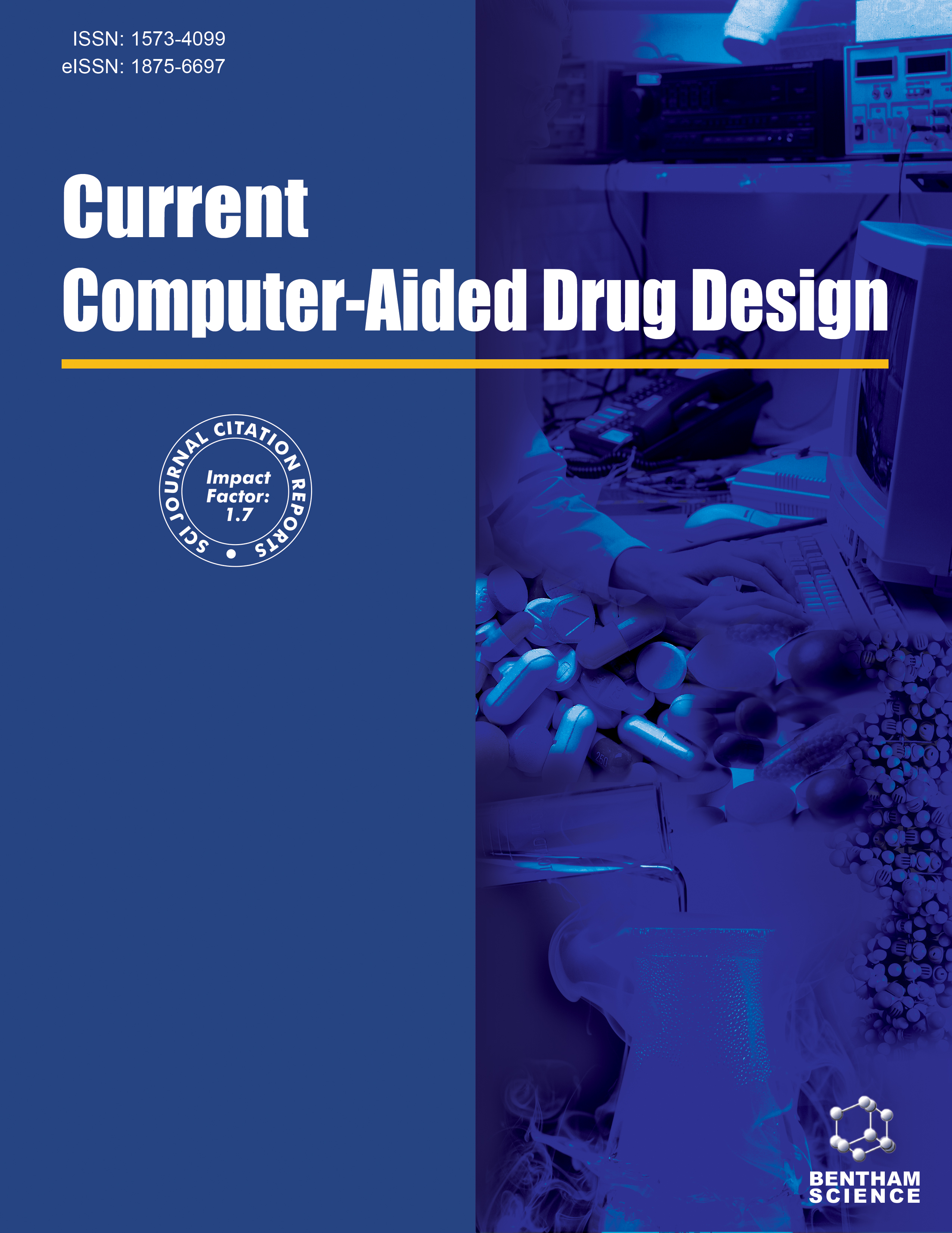- Home
- A-Z Publications
- Current Computer - Aided Drug Design
- Previous Issues
- Volume 10, Issue 2, 2014
Current Computer - Aided Drug Design - Volume 10, Issue 2, 2014
Volume 10, Issue 2, 2014
-
-
QSTR Studies Regarding the ECOSAR Toxicity of Benzene-Carboxylic Acid' Esters to Fathead Minnow Fish (Pimephales promelas)
More LessAuthors: Laszlo Tarko, Mihai V. Putz, Cosmin Ionascu and Ana-Maria PutzThe present work employs 152 benzene-carboxylic acid' esters having computed the toxicity within the range [2.251, 10.222] for fathead minnow fish (Pimephales promelas). Calibration set includes many pairs having very similar chemical structure, size, shape and hydrophilicity, but very different value of ECOSAR toxicity or vice versa. The QSTR study, which uses all esters as calibration set, emphasized a large percent (1 Read More
-
-
-
A Probabilistic Analysis About the Concepts of Difficulty and Usefulness of a Molecular Ranking Classification
More LessAuthors: J. Vicente de Julian-Ortiz, Emili Besalu and Lionello PoglianiDiscerning between the concepts of difficulty and usefulness of a molecular ranking classification is of significant importance in virtual design chemistry. Here, both concepts are viewed from the statistical and practical point of view according to the standard definitions of enrichment and statistical significance p-values. These parameters are useful not only to compare distinct rankings obtained for the same molecular dat Read More
-
-
-
QSAR in Flavonoids by Similarity Cluster Prediction
More LessAuthors: Alexandra M. Harsa, Teodora E. Harsa, Sorana D. Bolboaca and Mircea V. DiudeaQuantitative Structure-Activity Relationships based on molecular descriptors calculated with correlation weights within the hypermolecule, considered to mimic the investigated correlational space, was performed on a set of 40 flavonoids (PubChem database). The best models describing log P and LD50 of this set of flavonoids were validated by the leave-one-out procedure, in the external test set and in a new v Read More
-
-
-
QSAR Multi-Target in Drug Discovery: A Review
More LessAuthors: Riccardo Zanni, Maria Galvez-Llompart, Jorge Galvez and Ramon García-DomenechThe main purpose of the present review is to summarize the most significant works up to date in the field of multi-target QSAR (mt-QSAR), in order to emphasize the importance that this technique has acquired over the last decade. Unlike traditional QSAR techniques, mt-QSAR permits to calculate the probability of activity of a given compound against different biological or pharmacological targets. In simple terms, a single Read More
-
-
-
Assessing the Validity of QSARs for Ready Biodegradability of Chemicals: An Applicability Domain Perspective
More LessAuthors: Faizan Sahigara, Davide Ballabio, Roberto Todeschini and Viviana ConsonniSeveral classical and two recently proposed Applicability Domain (AD) approaches were implemented on a set of three classification models retrieved from a published study to assess the ready biodegradability of chemicals. Each model was associated with an optimal AD approach based on its ability to a) retain maximum test molecules within the model’s AD, b) be appropriate for the strategy used towards model develop Read More
-
-
-
3D-QSAR Approaches in Drug Design: Perspectives to Generate Reliable CoMFA Models
More LessDrug discovery is mostly guided by innovative and knowledge by the application of experimental and computational approaches. Quantitative structure-activity relationships (QSAR) have a critical task in the discovery and optimization of lead compounds, thereby contributing to the development of new chemical entities. 3D-QSAR methods use the information of the tridimensional molecular structure of ligands and c Read More
-
-
-
Lacosamide Derivatives with Anticonvulsant Activity as Carbonic Anhydrase Inhibitors. Molecular Modeling, Docking and QSAR Analysis
More LessLacosamide is an anticonvulsant drug which presents carbonic anhydrase inhibition. In this paper, we analyzed the apparent relationship between both activities performing a molecular modeling, docking and QSAR studies on 18 lacosamide derivatives with known anticonvulsant activity. Docking results suggested the zinc-binding site of carbonic anhydrase is a possible target of lacosamide and lacosamide derivatives mak Read More
-
-
-
Mitotic Checkpoint Proteins Mad1 and Mad2 – Structural and Functional Relationship with Implication in Genetic Diseases
More LessIn normal cells, the accuracy of chromosome segregation which assures cells euploidy depends on mitosis mechanics and on proper functioning of a specific complex of proteins represented by the error-checking spindle assembly checkpoint (SAC). SAC proteins are deeply involved in correct cell divisions, but some of these, such as mitotic arrest-deficient proteins (Mad1 and Mad2), are critical. Mad1 and Mad2 are involved in Read More
-
Volumes & issues
-
Volume 21 (2025)
-
Volume 20 (2024)
-
Volume 19 (2023)
-
Volume 18 (2022)
-
Volume 17 (2021)
-
Volume 16 (2020)
-
Volume 15 (2019)
-
Volume 14 (2018)
-
Volume 13 (2017)
-
Volume 12 (2016)
-
Volume 11 (2015)
-
Volume 10 (2014)
-
Volume 9 (2013)
-
Volume 8 (2012)
-
Volume 7 (2011)
-
Volume 6 (2010)
-
Volume 5 (2009)
-
Volume 4 (2008)
-
Volume 3 (2007)
-
Volume 2 (2006)
-
Volume 1 (2005)
Most Read This Month
Article
content/journals/cad
Journal
10
5
false
en


